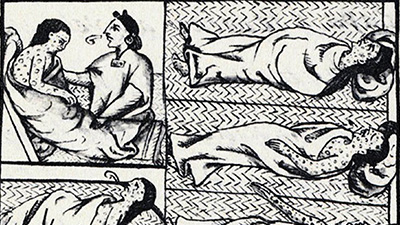Transoceanic Migration
Teacher Resources
Driving Question: What were the causes and effects of increased global exchange and migration?
The Columbian Exchange moved goods, plants, and animals around the world, but it also moved people. Tens of millions of people crossed oceans. Some went in search of a better life, while others were forced to migrate for a life in servitude or enslavement. These stories of migration highlight some of the disastrous effects of global exchange.
Learning Objectives:
- Evaluate the impact of the Columbian Exchange on transatlantic migration patterns.
- Learn about the causes and effects of increased migration during this period.
- Use the historical thinking skill of causation to assess transatlantic migration during this period.
Vocab Terms:
- abolition
- demographic
- indentured servitude
- indigenous
- migration
- pandemic
- plantation
Opener: Transoceanic Migration
To teach this lesson step, refer to page 2 of the Lesson 3.8 Teaching Guide.
Check out this blog post for some additional (fun!) lesson ideas for teaching about oceanic connections.
Look back on all you’ve learned in Unit 3 by reviewing and connecting important vocabulary.
Why Did People Migrate?
To teach this lesson step, refer to page 3 of the Lesson 3.8 Teaching Guide.
Looking for ways to give feedback to students on their causation skills? Here’s the Causation Feedback Form.
Traveling over the Atlantic Ocean in the 1500s was no pleasure cruise—this was dangerous business. This article and activity will help you understand what would cause people to make such a dangerous journey.
-
Guiding Questions
-
Before you read
Preview the questions below, and then skim the article. Be sure to look at the section headings and any images.
While you read
Look for answers to these questions:
- What three key events shaped transatlantic migration patterns in this period?
- What were the main reasons Europeans voluntarily migrated to the Americas in this era?
- How did the forced labor of African and Indigenous people in the Americas affect the lives of working-class Europeans?
- How did the abolition of the slave trade change transatlantic migration patterns?
After you read
Respond to this question: How did communities change in the Americas as a result of the movement of both voluntary and involuntary migrants?
Effects of Global Migration
To teach this lesson step, refer to page 6 of the Lesson 3.8 Teaching Guide.
For reading strategies, check out the OER Project Reading Overview.
The migration of people from Afro-Eurasia to the Americas transformed the world. Many of these transformations were catastrophic, particularly for Indigenous American and African communities.
-
Guiding Questions
-
Before you read
Preview the questions below, and then skim the article. Be sure to look at the section headings and any images.
While you read
Look for answers to these questions:
- Why is it difficult for historians to determine the scale of the Great Dying?
- What groups of people migrated to the Americas involuntarily?
- What do the categories mestizo and mulatto mean? Who came up with these categories?
- How did the population of sub-Saharan Africa change because of the Columbian Exchange?
- What was the plantation complex and whom did it benefit?
After you read
Respond to this question: Can you think of any negative consequences of the global connections in our world today?
Closer: Transoceanic Migration
To teach this lesson step, refer to page 7 of the Lesson 3.8 Teaching Guide.
You’ve explored the consequences of increased global exchange and migration. Reflect on what you learned, what surprised you, and what questions you still have.






